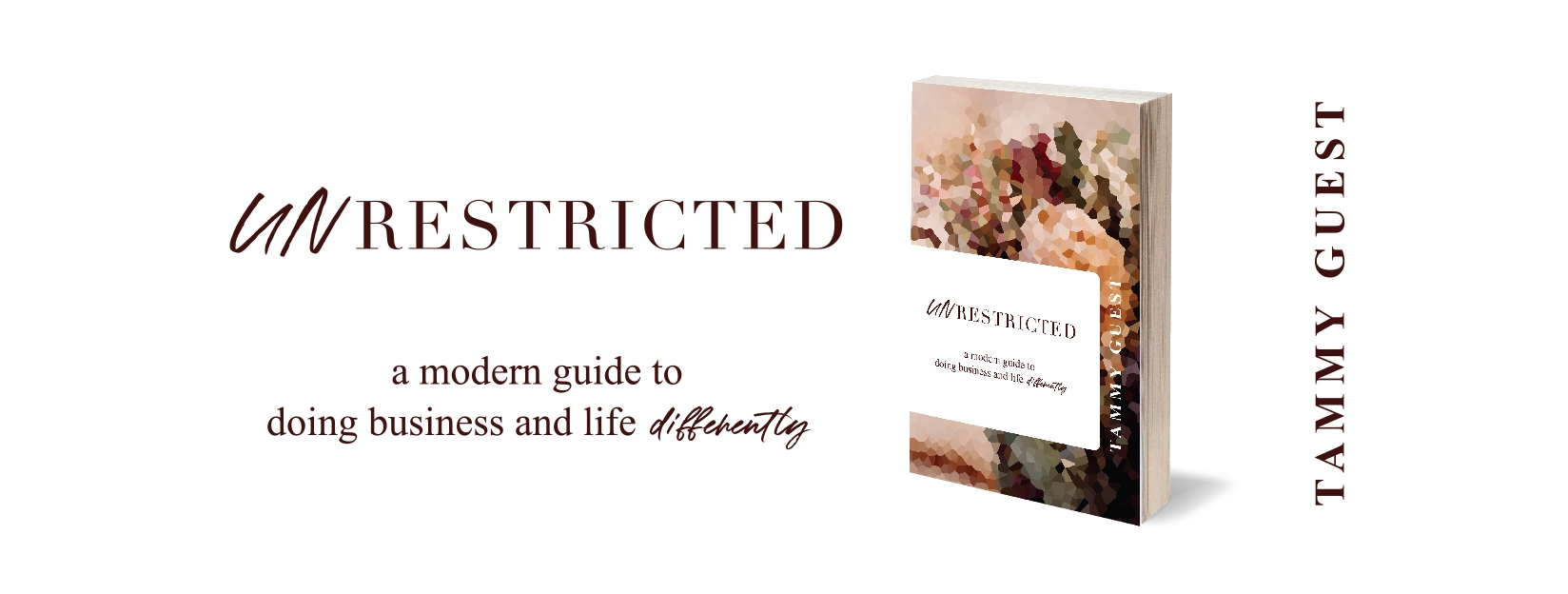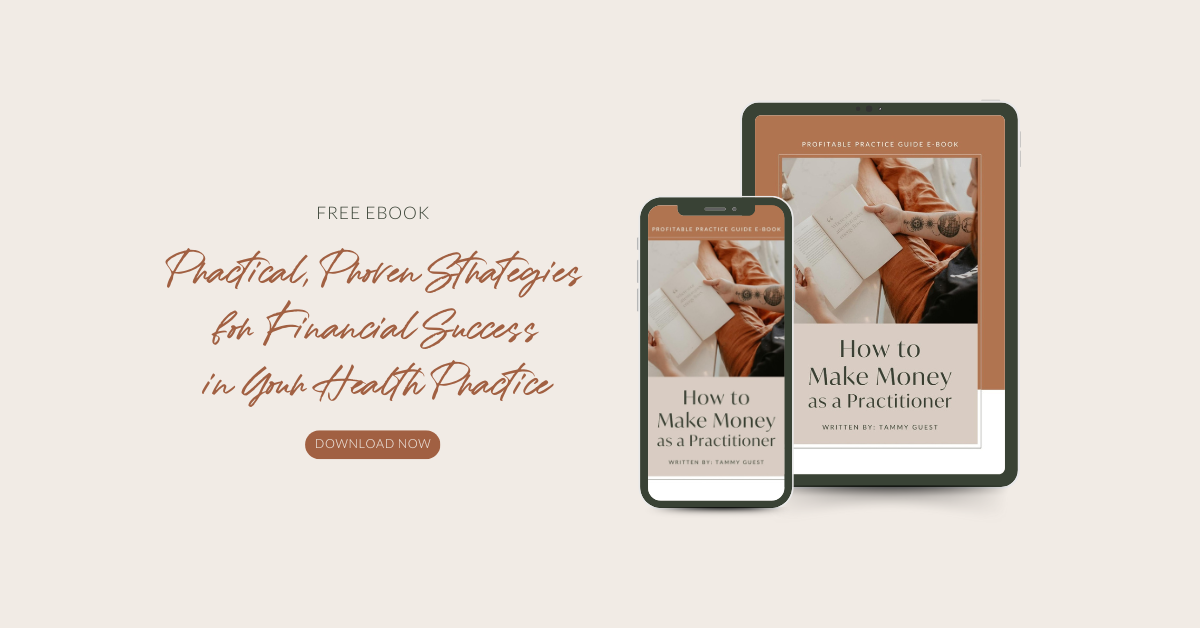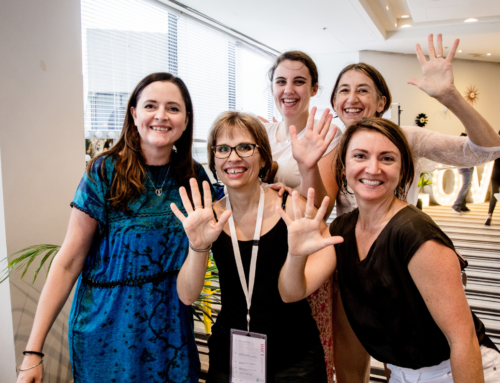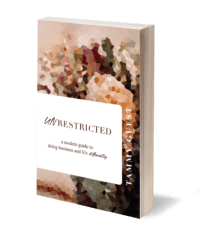Let’s talk about freebies for a minute.
There are so many cool things out there at the moment that are free, right? We have free:
- trainings
- webinars
- ebooks
- booking platforms
- yoga
- payment platforms
- and tons more
There are so many freebies available nowadays that it can be overwhelming.
The problem is that with freebies comes another little extra thing that happens sometimes. I experienced this recently when I was wondering, “What should I do about my yoga?” There are so many options. One is free, others I could pay for.
But you know what happened?
There were so many to choose from that I literally did nothing.
So today, I want to talk about the Freebie Paralysis that can happen, and how to combat it and get your momentum back.
[vc_video link=’https://www.youtube.com/watch?v=wQRm0uZlQkg’]
Freebie Paralysis
Let’s talk about the mindset issues that come up when we are trying to decide what to do about something that’s free.
I’ve been seeing a couple of things around Zoom at the moment. Zoom is free, right? It’s a platform that’s available. It’s really quick. It’s easy to use. So why aren’t we all making decisions to use it?
Yoga is free at the moment on some platforms. Why aren’t we all just joining yoga at the moment?
It comes down to how we make decisions.
How Do We Make Decisions?
Preferences
The first thing we think about when we are making a decision about anything is what do we prefer?
You might prefer chocolate ice cream versus vanilla ice cream. Or you might not enjoy ice cream at all and want a raw cacao mixed with frozen avocado kind of scenario. But we all have a preference.
For me, this is never more prevalent than flying on an aeroplane.
Filters
The second thing we do when we’re making a decision is to use filters.
I have a preference for Virgin because there are some little things that meet the filters that I use to set my preferences.
Filters can be determined by a lot of different things, such as:
- my past experiences
- the consequences of choices I made in the past
- how I want to feel
- the money stories I’ve picked up from friends, family and personal experiences
- things I’ve learned
- based on science
- what’s important to me
- based on style
- or many other things
So my preferences come from all of these things that I filter through to make a decision.
And my preference for Virgin is around them meeting my values, my experience, my level of understanding, and where I want to feel abundant around money and finances. So I don’t choose Tiger Air or something similar like I did when I was a student.
Filters change with time and experiences
Now, do realise that your preferences and your filters will change. When I was a student, mine were totally different than they are now.
Your filters when you’re choosing a platform or training might be based on:
- where you currently are financially
- what you’ve experienced in the past
- whether there are associations with different partnerships
- different relationships or conversations from your past
There are all sorts of filters that come forward for your preference.
Another example that I find really interesting is about technology. Who has an Android phone versus an Apple phone? And who has PC versus a Mac?
Now, when you’re making a decision about these types of things, you have a preference, right? Neither of these things is right or wrong. They’re right for you at the time. And they’re based on your:
- values
- finances
- what this means for you
- results you’ve had before
- how you feel about it and how you want to feel about it
And then we make a decision.
So, when you are making a decision, you’ll start with preference and then you’ll go through your filters until you come to a little roadblock.
Confirmation Bias
If you’ve got Android and there are lots of people saying you should choose Android. But there are also lots of people saying Apple does this certain thing. If the two options you’re considering match up in the amount of money and other peoples’ experiences, the stories that you’re getting from people you trust, then you’re stuck going, “What shall I do? ”
This is where comes confirmation bias come in. Confirmation bias is the roadblock that many of us come up against that ties us up into beautiful procrastination.
Because we’re going around in circles about:
- this person said it didn’t work so that’s probably not the thing I want to use
- such and such said something else
- and here’s this article with another viewpoint
- Oh, my goodness, is that what Apple does with all of this stuff?
See, based on all of our filters we already had an idea about what we wanted the answer to be. But then up came our confirmation bias to match us exactly where it is.
This thing happens in your brain that matches things up. Pattern recognition is confirming and saving you energy by not having to think outside the scope.
Now, we do this all the time as practitioners. And I find it fascinating that we don’t do it when it comes to business.
As practitioners, we would never just try to find all of the literature that only supports our decision. We’re all still going to have a look at what other literature is around and then weigh it up with our filters, whether that matches what we are considering.
So with business, you have the opportunity to do the same thing. Notice where your preferences might be getting in the way. There might be a little jiggle where your values are being met or not where your confirmation bias is coming up.
Some symptoms of confirmation bias are:
- justification
- getting angry when someone doesn’t agree with you
- finding excuses or ways around
It’s a very different feel from noticing and sitting back and weighing up the options.
How To Make A Decision About A Freebie
So, when you need to make a decision about something free, consider these 5 things:
#1: What is your preference?
Notice where your preferences are helping you or hindering you.
#2: What are your filters?
Number two, is what filters are you actually working it through? Are you working it through your own filters based on the past? Or are you working it through filters based on other people that you’ve heard from? And are they helpful or hindering?
#3: What is your confirmation bias?
And the third one is, where is your confirmation bias? Are you actually trying to justify what’s happening? Or are you coming at it from a space of curiosity like a scientist?
Seeing what’s available, including looking at the research that’s available and taking it on board. And like a scientist, making a well thought out decision.
#4: Run an experiment
Number four is to run an experiment. Just like a scientist, the only way to truly find out what’s going on is to run an experiment.
You might notice that the word “experiment” has the same beginning as the word “experience.”
This is the thing – Being in business, I find that unless I’ve had an experience at the same time with both PC and a Mac. Or both an Android phone and iPhone. How am I really going to know which one’s going to work best for me?
We can mull it over, think about it, and learn about every different facet of it. But until we experientially go through the process, we won’t know the nuances for us at this particular time.
Now, back to my example of airlines.
When I was a student, my experience with Tiger Air was amazing. It was so good to be able to fly for absolutely nothing. At that time, I could easily turn a blind eye to being late, or things being cancelled and postponed. My experience was matching what I expected.
Whereas with Virgin, especially now and during my roadshow and travelling the past couple of years, there is no way I could possibly go back to those other airlines. Because with Virgin, my experience is met for where I’m at currently.
Make a Decision and Experience It
Here’s the thing about all of the online programmes that you’re considering, even if they’re free. You have to make a decision and experience it.
You can get everybody’s different point of view, every piece of media, research, opinion, and preference. But it’s not yours for:
- where you’re currently at
- what you’re currently doing
- in your very unique situation right now
- the particular way you have learned before
- how you want to present yourself
- your financials
- the way in which you understand the world and prefer things
It’s the same nuances as when choosing a Mac or a PC, an Android or an iPhone. There are going to be some really unique things to you.
So you can do all the research in the world but it’s really important to just experience it.
What I am suggesting is that if you’re seeing all of these platforms out there and thinking, “I’m gonna do all the research and then I’m going to perfectly get it and then it’s going to be perfect.”
That’s just not going to work
I went through about eight different platforms for booking systems. This was 10 years ago when booking systems weren’t even a thing. My poor receptionist at the time had to keep up with every iteration of what we were doing. But the only way we could understand whether it was working for us at that particular time, for our clinic, the number of practitioners we had, and the way we wanted to integrate it, was to go through the experience of it.
So you need to actually lean in, take the leap, and do the thing. This applies whether it’s:
- a platform you want to use for telehealth
- another way of doing business online
- a different way of presenting your knowledge
- doing an e-course
- finding the platform for a course you’ve already created
You have to lean in, pick one, do it from experience. Notice what’s coming up before it but you have to get the experience in it.
Some of these things are going to be really cool. Like a great experiment where you’ve got the hypothesis and all of your experiment meets the hypothesis and you get the grant and all of the wonderful things that come with having really great science. But really great science also comes with failures because you learn so much more from it.
Now, those eight different booking platforms I told you about. We learned so much about what we needed in our clinic, our particular situation, and what we really wanted that by the time we got to the last platform change, we were on it. We were so aware of what we needed because we had beautifully failed seven different times beforehand and really understood what we wanted.
So, this is the thing. Right now is the time to fail really fast. Because everyone knows that technology sometimes fails. So it’s the perfect time to get on the train and try something different in your practice. There’s a little bit of a grace period when this happens because everybody’s in the same boat. And technology’s in a little, a weird little boat too.
So, there’s this jiggly period where you can actually get on board and experience. Take the action, take the leap, and then figure out what’s working and what’s not.
#5: Level up to the paid version
Now, when it comes to picking a platform or training, the next issue is how to actually get it done.
The thing about free stuff is, at some point, the free level won’t quite cut it. I learned this way back, especially with the booking system and in the webinar space and things like that. If you are using the freebie version of something, there’s only so much it’s going to give. And complaining about what it doesn’t give you won’t change anything.
Number five is, at some point through experience, you’ll understand that the next step is actually paying for it. You do have to get to a point where you can pay for it. Depending on what you’ve researched and how it matches your preferences, what your experience of it is, paying for it means probably means that all of a sudden, you actually get all of the things you’ve been asking for.
It’s the same when it comes to your security levels and when it comes to training. If you get the freebie version that goes for only 60 minutes and then you get the paid one that goes for 12 hours, there’s obviously going to be a hell of a lot more in there.
Whether it comes to booking systems, payment gateways, or other platforms for your business – there are so many more options available to you when you pay. There is only so far freebies can take you and after that, you have the option of paying.
Make the tool pay for itself
The clever-minded, strategic, business-minded way of doing it is to experience the freebie version and go through every little bit of that to know what works and what doesn’t work, then once you’re convinced it will do what is suggested, then you utilise it to make the money to pay for it.
It’s the same with any platform or training. I’ve spoken about return on investment before. If it’s a freebie, you’re just investing time but you need to get money back for that time you’ve invested on it. Whether it’s a training or platform, if you’re utilising that free version, you could be getting paid by people coming in using that freebie platform.
Once they’ve paid, you can reinvest it into the platform that costs a little more but offers much more value.
So when you’re consuming freebie content, if you take action and experience through it, the return on investment is when you can put the money back in and get the exact thing you need out of it.
Take Action
Hopefully, this has been helpful. I highly suggest you start to pay attention to the way you think about things and how you make decisions. Look for the different filters that you’re filtering through, and then actually take the action. If the action is working, try to figure out a way to get a return on that investment to pay for it.
Whether you are taking your business online right now – or have already been online for a while – use these tips to make good choices for your business. Take the actions that you need, experience and experiment to discover what’s right for you and your business.
And if you got something out of this or you know somebody who would, please share it.










Leave A Comment